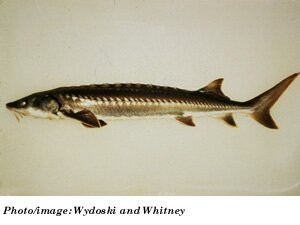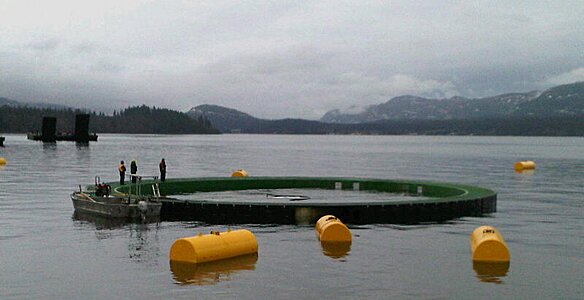The Vancouver Sun reported a few weeks ago in this article () that some salmon farming areas directly in the path of migrating Fraser River and other southern BC salmon might be re-opened after two years of sitting fallow (inactive).
…By adding another half million farmed fish to the sensitive migration route, Marine Harvest is sending a signal to British Columbians that they are not concerned about the impact their fish farms are having on wild salmon,” said Michelle Young, of the Georgia Strait Alliance and the Coastal Alliance for Aquaculture Reform.
The major concern is that the farm will put the offspring of the collapsed 2009 Fraser River sockeye run at risk, she said.
But Clare Backman, Marine Harvest sustainability director, said the farm will be managed carefully to ensure there is no effect on wild salmon.
The fallowing was part of a normal pattern and the farm is being reopened because of a subletting request, he said. “Using these sites has not been in our plan, but Grieg Seafood asked if they could use the site.” Backman said.
The site is up to date and complies with all the rules, he said.
As in all Marine Harvest farms, disease and sea lice are addressed to ensure there is no threat to wild salmon, Backman said…
_ _ _ _ _
But I don’t really understand…
On March 2, 2010 Gail Shea the federal Minister of Fisheries & Oceans announced in a “Ministerial Statement” entitled :
The Government of Canada is deferring the negotiation of fisheries components at treaty tables in British Columbia that involve salmon, pending the findings and recommendations of the Commission of Inquiry into the Decline of Sockeye Salmon in the Fraser River [Cohen Commission].
The deferral of fisheries related negotiations will allow for treaty negotiations to be staged so that fish chapters in treaties can be informed by the findings and recommendations of the Inquiry. (my emphasis)
Some might say, “hey that’s prudent… defer these vital chapters of an already stalled and slow process until Justice Cohen can report.”
The ministerial release continues:
“The Fraser River sockeye salmon stocks have been in decline and the Commission of Inquiry has been established to investigate the matter. The Commissioner has been mandated with investigating the causes for the decline, assessing the current state of Fraser River sockeye salmon stocks and long term projections for those stocks, and making recommendations for improving the sustainability of the sockeye salmon fishery in the Fraser River.
The Commission is expected to provide an interim report in August, 2010 followed by a final report by May 1, 2011. [this has now been extended to June 2012 with an additional $11 million budget injection]
“The findings of the Commission of Inquiry may have implications for management of other Pacific salmon fisheries, and it is therefore prudent to defer negotiations on the fisheries components of treaties in British Columbia.
_ _ _ _ _ _
“…may have implications for management of other Pacific salmon fisheries…”
That’s an important line here, because if one looks at the main reason why DFO and the Province of BC just got slapped in BC Supreme Court in 2009… it was because:
In February 2009, the British Columbia Supreme Court (BCSC) ruled that the activity of aquaculture is a fishery which falls under exclusive federal jurisdiction pursuant to sub-section 91(12) of the Constitution Act, 1867 – Sea Coast and Inland Fisheries and, in effect, struck down substantial portions of the provincial regulatory regime governing aquaculture.
_ _ _ _ _ _
So, its “prudent” to shutdown First Nation treaty negotiations surrounding fisheries so as to await the recommendations of the Cohen Commission… however, not so prudent to discuss whether fallowed open-pen salmon farming sites (e.g. another form of “fishing”) should be re-opened along wild salmon migration routes?
Yes, yes, I can hear the salmon farming advocates now… however, the BC Salmon Farmers Assoc. and others would not have been granted “standing” in the Cohen Commission if all the science and proof was in that salmon farming does not impact wild salmon.
Or, that salmon farming as currently practiced may need to be scaled back.
Or, that maybe fallowed sites should not be opened just yet.
There’s still some important questions to be answered here (hopefully some by the Cohen Commission, although it’ll not be till 2012 now…) — hence the prudence in Treaty negotiations… but not so much in more “economic” fisheries activities?
Might this be a little double speak? A little double standard?
_ _ _ _ _
And this on the coattails of the 2009 Supreme Court decision that made it clear that the two governments didn’t even know who was supposed to be the umpire at the ball game, let alone who was on first base…
And then everyone should trust the companies when they state: “The site is up to date and complies with all the rules”?
This, when the wrong team was developing and ‘enforcing’ the rules for a good decade or two (the Province of BC)… let alone ensuring the right rules were in place to ensure protection of wild salmon and other marine species…
Sure there might be “compliance” with the rules, but does that mean the “rules” are the right rules?
The rules of the road suggest that in some places the speed limit is 80 km/hr… yet accidents still happen even when complying with the rules of the road and the speed limit…





 This mixture of vagueness and sheer incompetence is the most marked characteristic of modern English prose, and especially of any kind of political writing. As soon as certain topics are raised, the concrete melts into the abstract and no one seems able to think of turns of speech that are not hackneyed: prose consists less and less of words chosen for the sake of their meaning, and more and more of phrases tacked together like the sections of a prefabricated henhouse.
This mixture of vagueness and sheer incompetence is the most marked characteristic of modern English prose, and especially of any kind of political writing. As soon as certain topics are raised, the concrete melts into the abstract and no one seems able to think of turns of speech that are not hackneyed: prose consists less and less of words chosen for the sake of their meaning, and more and more of phrases tacked together like the sections of a prefabricated henhouse.
